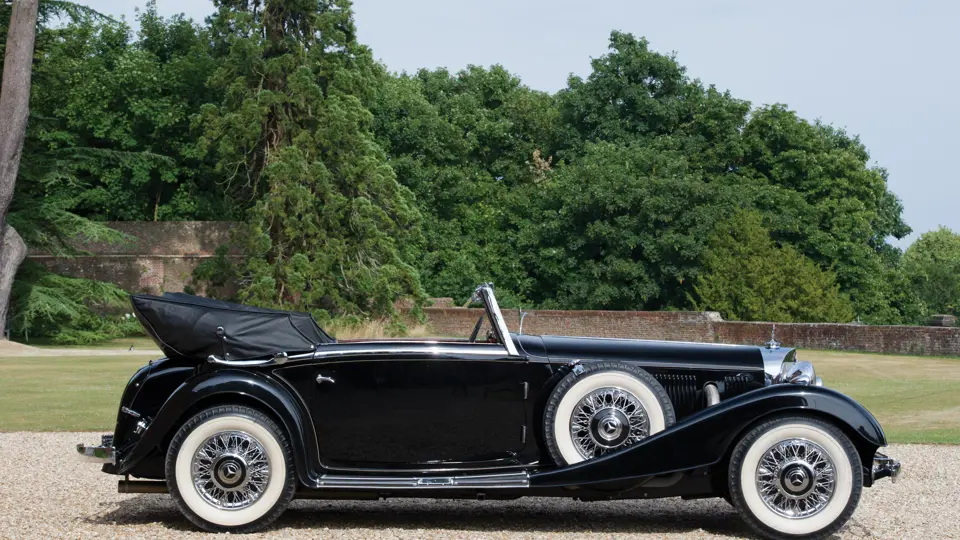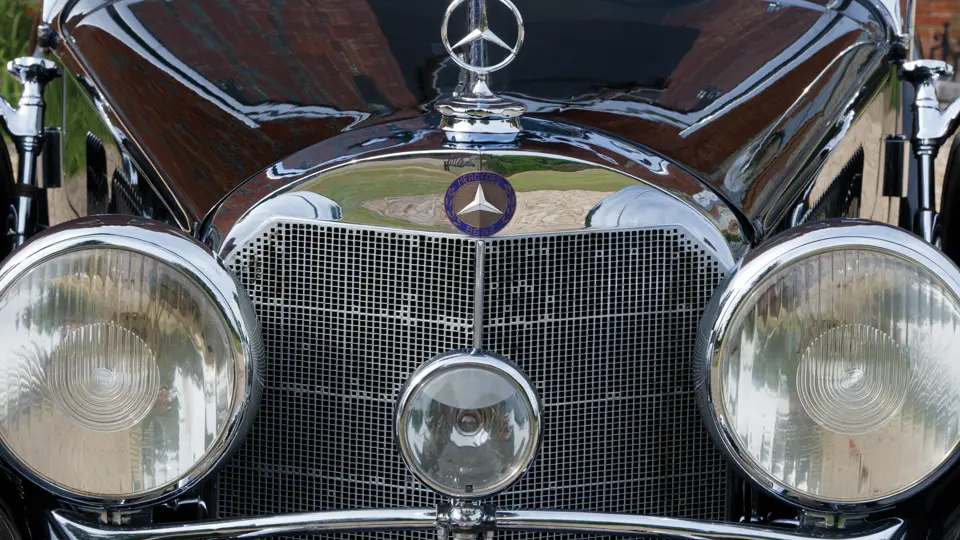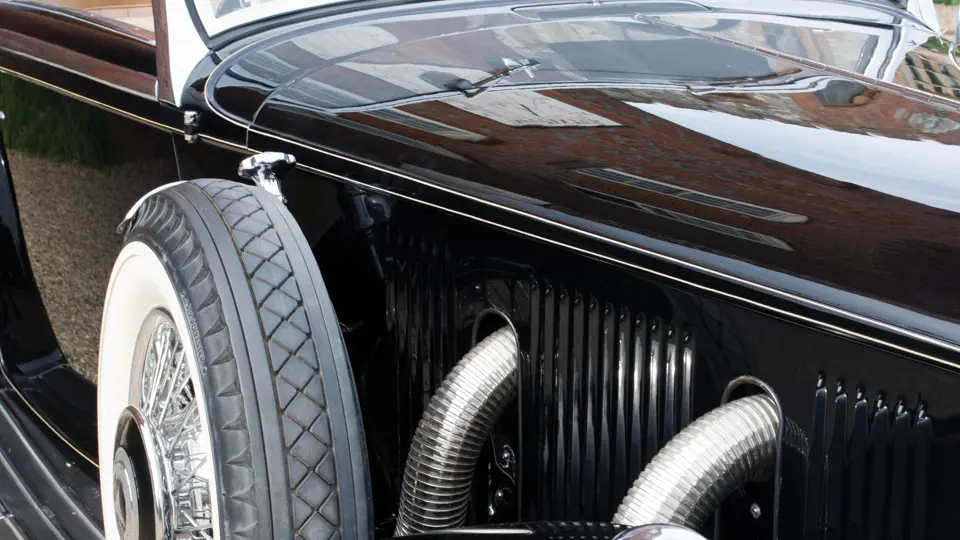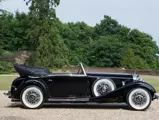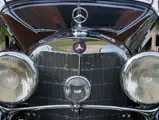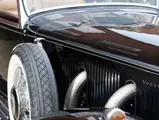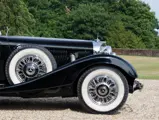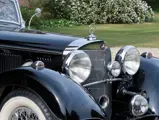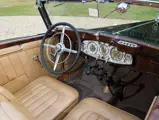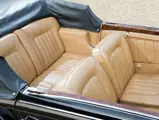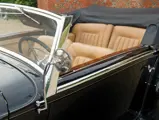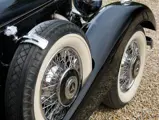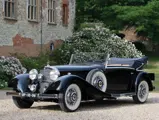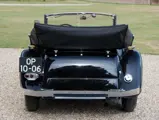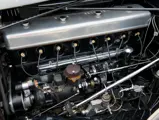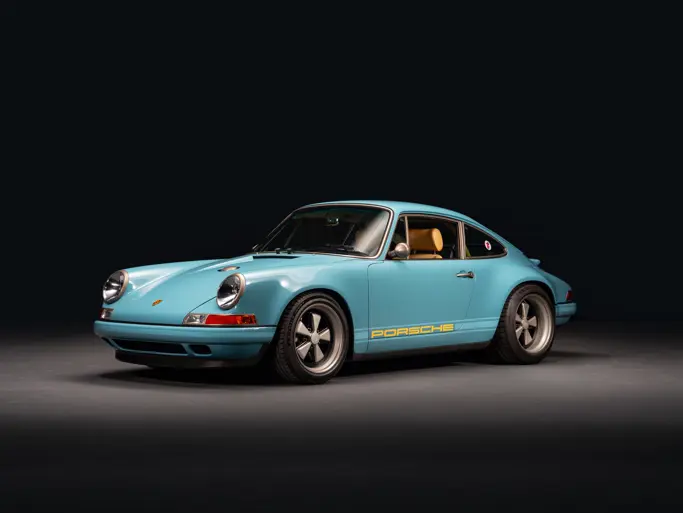100/160 hp, 5,018 cc supercharged overhead-valve inline eight-cylinder engine with driver-activated and gear-driven Roots-type supercharger with twin updraft pressurised carburettors, four-speed manual transmission, independent wishbone coil front suspension, independent swing arm rear suspension, and four-wheel, servo-assisted hydraulic drum brakes. Wheelbase: 3,290 mm
No other automobile marque has so consistently led the field, literally from the very beginning of the industry, than Mercedes-Benz. Credited with the first production automobile, the company has been manufacturing automobiles longer than any other. Steadily improving products meant that by the first decade of the twentieth century, chain-driven Mercedes race cars were a dominant force around the world. On the street, the massive 90 horsepower cars had no equal for sheer power, speed, and elegance.
By 1922, a six-litre engine with the newly designed supercharger was married to a shortened wheelbase. The result was considered the fastest touring car of its time, as it produced an impressive 160 horsepower with the supercharger engaged. The S-series then began to evolve, soon to be joined by the SS and SSK models. More than any other model, it was this series of supercharged six-cylinder cars that established Mercedes-Benz’s outstanding international reputation. In its fully developed form, the supercharged, 7.1-litre engine of the SSK could reach a staggering 300 horsepower, which powered the lightweight, streamlined coachwork to an unheard of 147 mph. The overwhelming performance of the SSK model resulted in many victories for Mercedes-Benz. Perhaps the most important of these were Rudolf Caracciola’s wins at the 1931 Mille Miglia and German Grand Prix.
By the late 1920s, the S, SS, and, ultimately, the SSK chassis were revered as a tour de force of automotive engineering. Few today remember that it was Ferdinand Porsche who developed the dominant characteristic of the engines: their superchargers. As the chief engineer for Daimler (after 1926, Daimler-Benz) from 1924 until 1929, Dr Porsche laid the foundation upon which the next generation, now to be eight-cylinder cars, would be built.
But it was to be under the direction of a brilliant young engineer, Hans Nibel, that the eight-cylinder cars were created, beginning with the Type 380, which was the first production car with independent front suspension. Succeeded by the 500 K, then ultimately the 540 K, these cars were built upon two main frame rails that are tapered at the front to fit the narrow radiator behind the front suspension, which had become a Mercedes-Benz hallmark. The factory coachworks at Sindelfingen had already earned a reputation for top quality workmanship, perhaps the best in Europe, producing stylish, imposing automobiles trimmed to the highest levels of luxury.
The 380, the first of these supercharged, overhead-valve, eight-cylinder flagships, was introduced in 1933. Power output was modest, at 90 brake horsepower naturally aspirated, or 120 brake horsepower with the blower engaged, but its smooth refinement made the potential clear. With its attractive Sindelfingen coachwork, 157 chassis were built. Performance, whilst acceptable, was not outstanding, particularly with the heavier coachwork, which resulted from customer demand for even more luxurious bodies.
Recognising the need for more power, Mercedes- Benz introduced the 500 K, with the “K” standing for kompressor, or supercharger, in 1934. With power increased to 100 brake horsepower, or 160 brake horsepower with the supercharger engaged, the cars were finally amongst the fastest grand touring cars of the time. Even though the 380 had also been supercharged, the K designation and new external exhaust left no doubt about the car’s very special capabilities.
The example offered here, chassis 215011, is mated to engine 130876. Although specific delivery data is not known due to the unavailability of a kommission sheet, Mercedes-Benz was able to verify that chassis and engine 130876 was delivered new to a client in Lisbon, Portugal, in May 1936. They were also able to further indicate that 215011, which is found stamped on the driver’s side of the chassis rail, is actually the kommission number for the car. On the passenger-side frame rail, the number 08:20 can be found stamped.
The fit and finish of the car is well above average, with the black exterior complemented by beige leather upholstery, tan carpeting, and a tan cloth top. This 500 K rides on chromed wire wheels that are shod with Bedford Famous Coach whitewall tyres; the car is also equipped with dual side-mounted spares. The roadway is lit by Bosch headlights, but there is also a pair of ancillary lights, which includes a centre spotlight by Destmo Ltd. and a single centre-mounted Raymond Pivophare light that turns with the steering wheel, just as the American Pilot-Ray lights do. The paint is in excellent condition and done to a very high standard, and every piece of chrome was re-plated at the time of restoration. Today, the exterior shows wear only from polishing marks, whilst the beautifully restored underside shows some use, but a gentle cleaning will bring it back to a higher degree of presentation.
The seat upholstery is moderately worn in both the front and rear, whilst the cloth top is in good condition and protected by a leather boot when in the down position. Contrasting the subdued upholstery is the beautiful burled wooden dash and trim, which gives an additional touch of class and flare to this stately conveyance. The engine bay is very clean and presentable, and it could be made more so with some detail work. It is interesting to point out that many assembly numbers can be seen on various ancillary components, which attests to the originality of the unit. The radiator, however, is weeping at various points, and it will likely need to be rebuilt or renewed. With the built-in trunk providing additional storage, this would make an ideal car for touring.
This 500 K simply conjures images of fast, top down touring on the open road. With the sound of the howling supercharger providing the symphony, and a young lady in the passenger seat, there is simply nothing better.

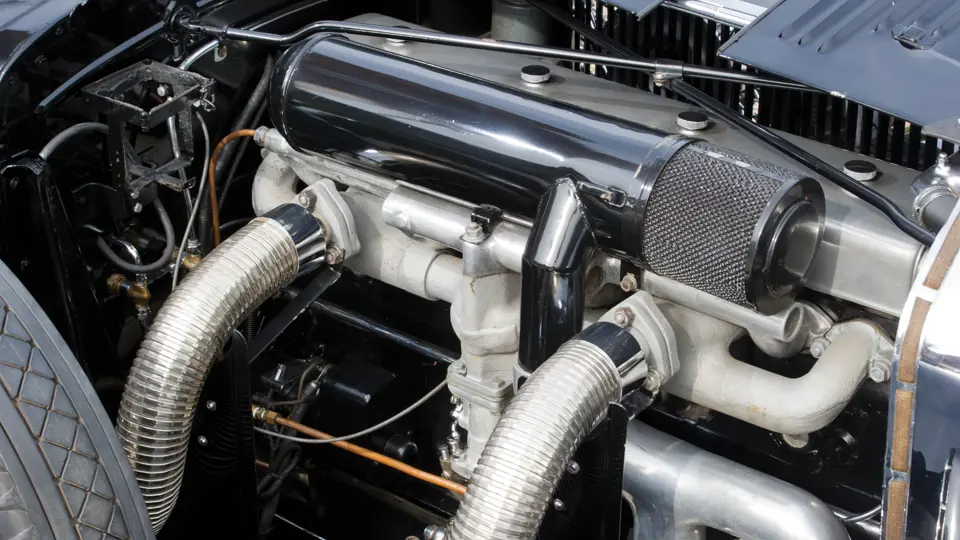
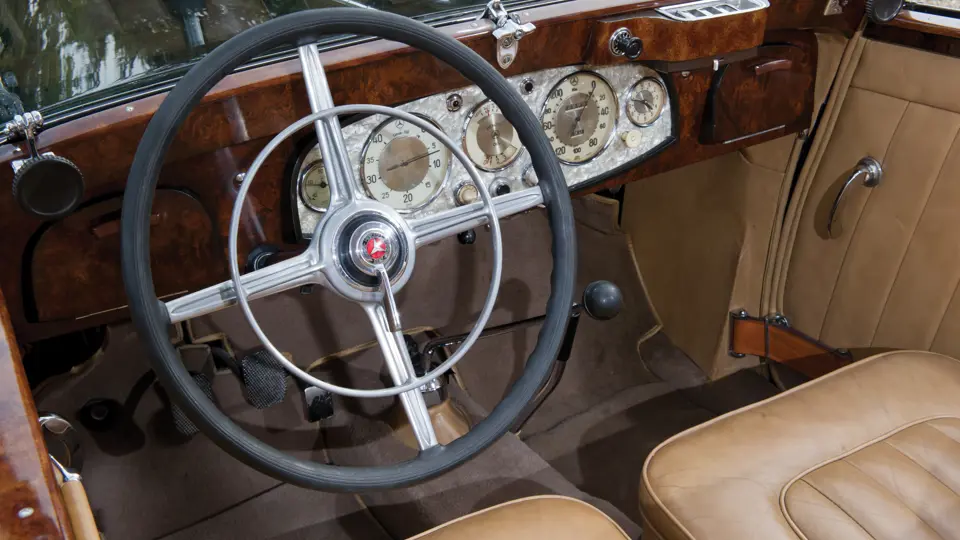

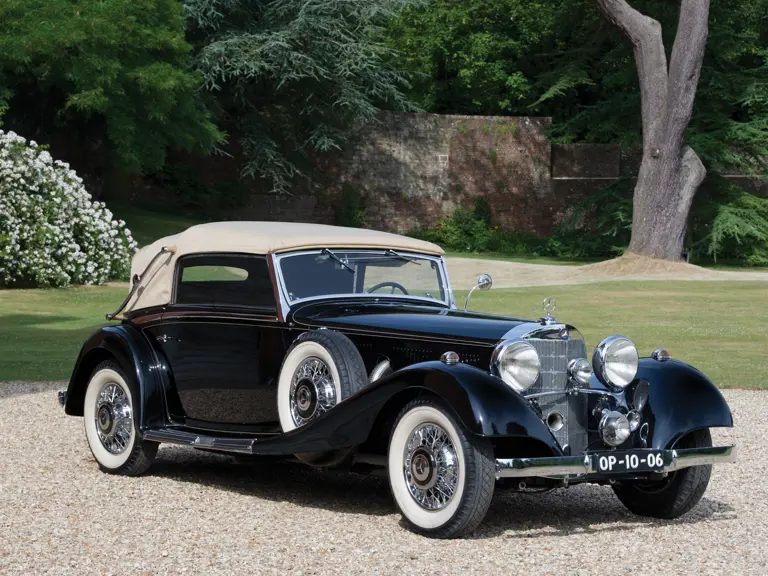
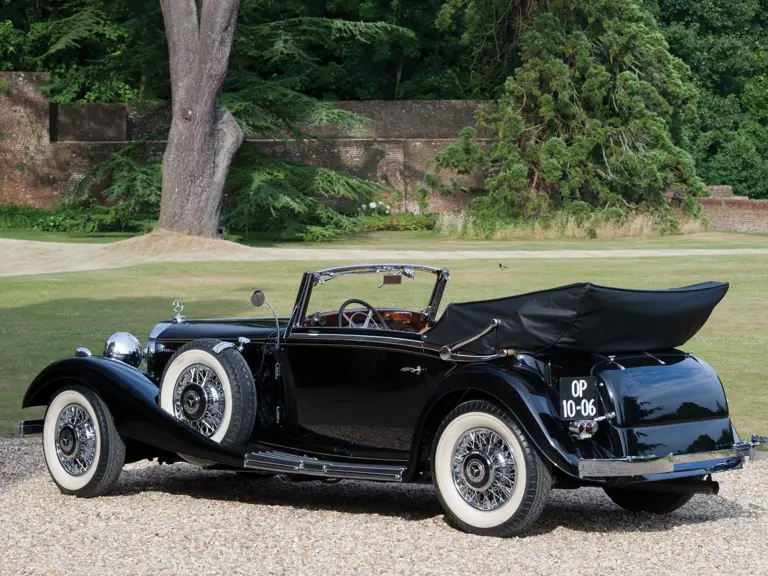
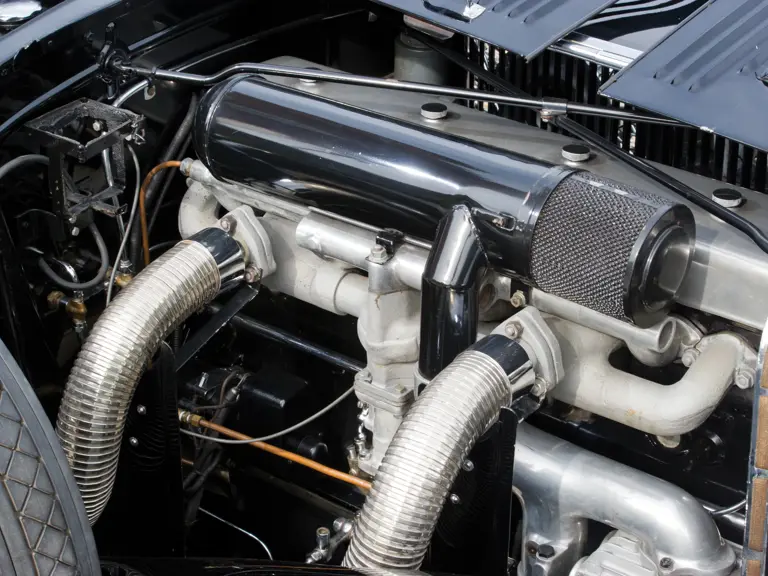
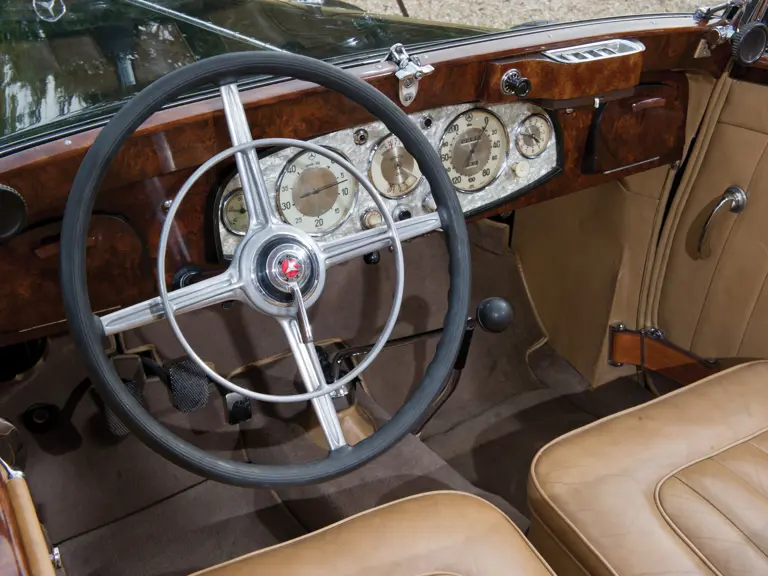
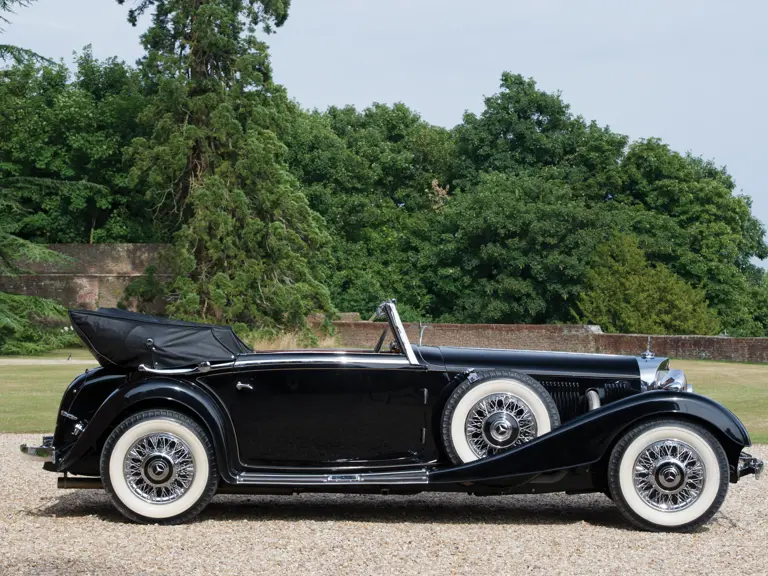

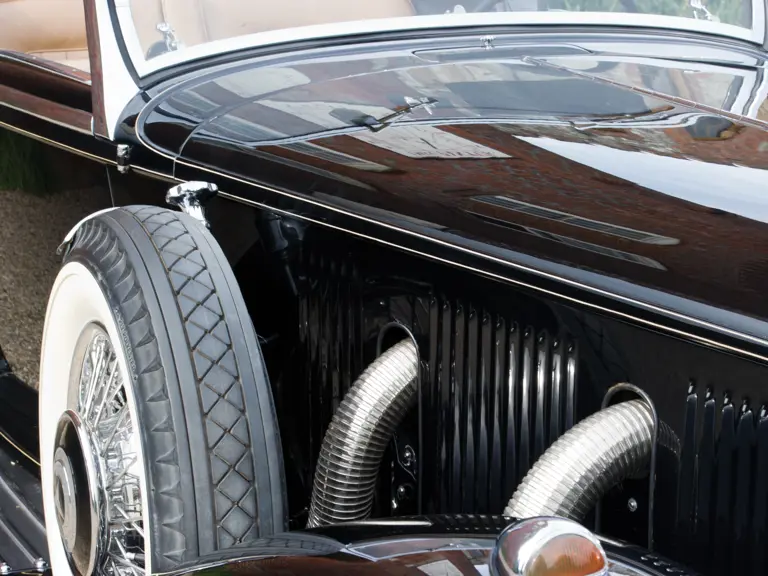
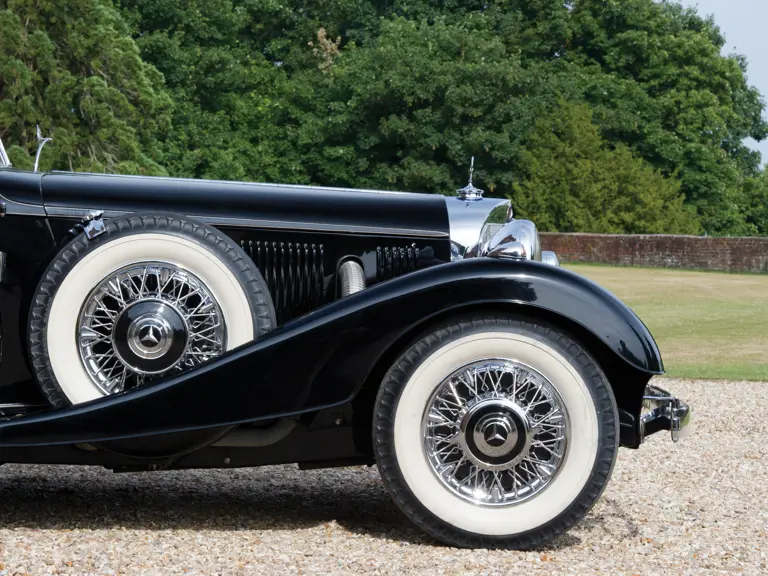
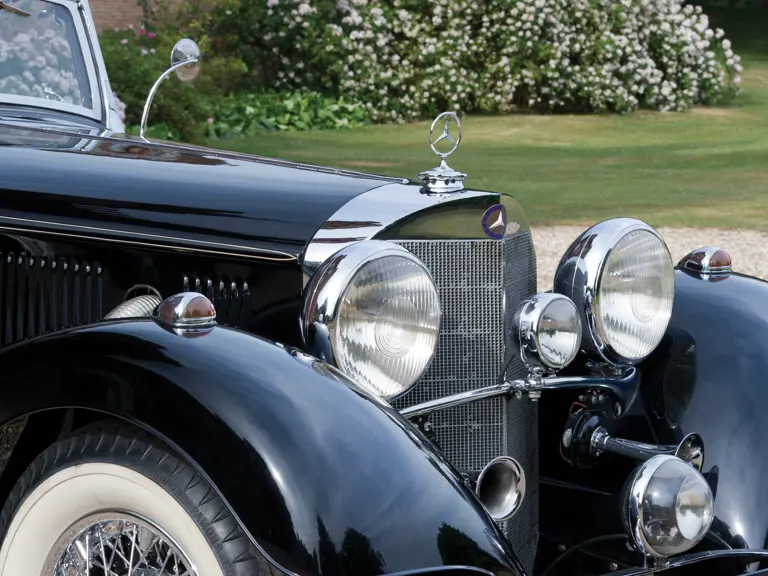
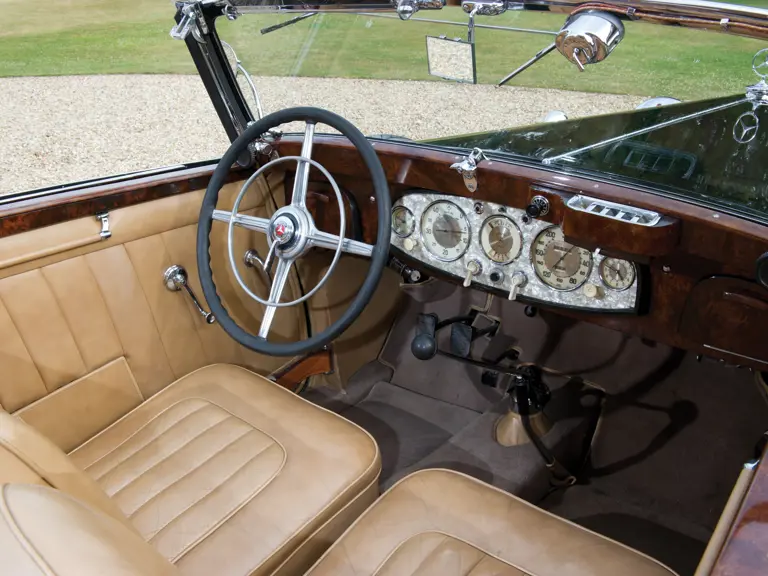
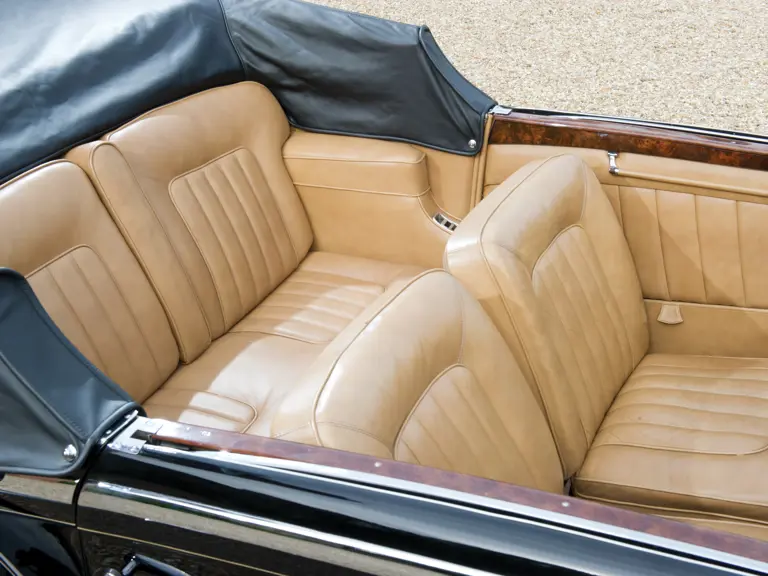
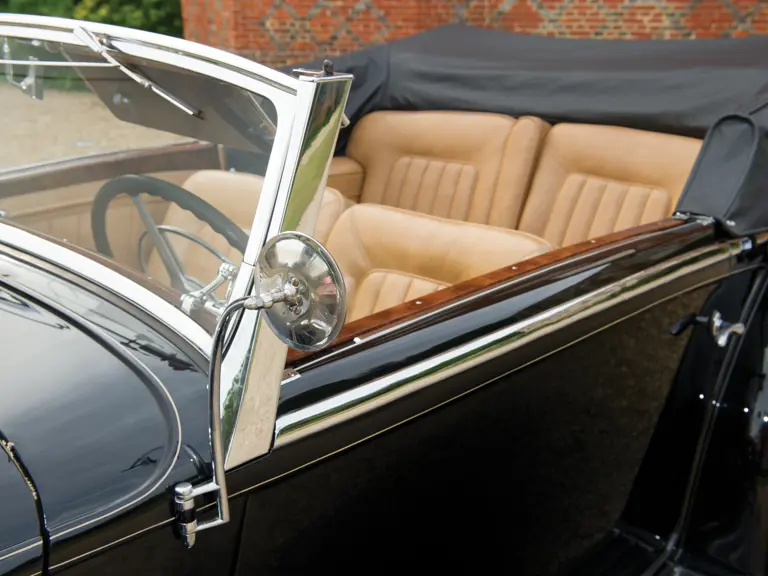
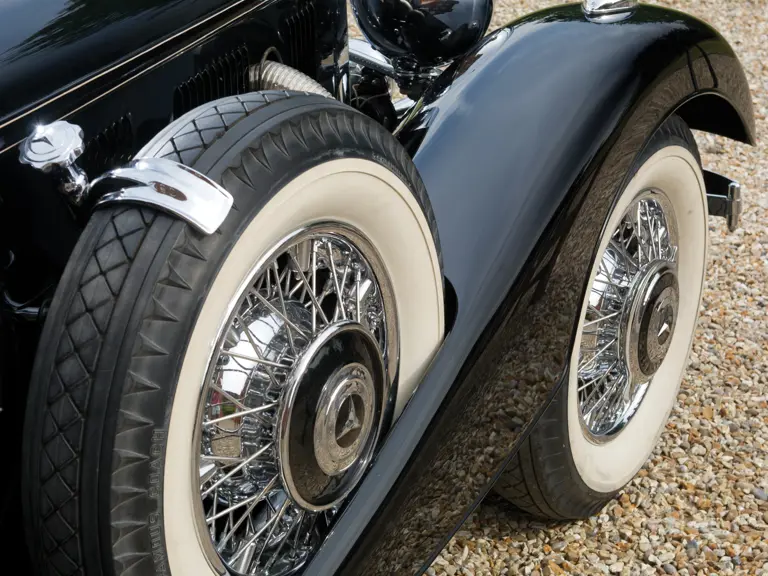

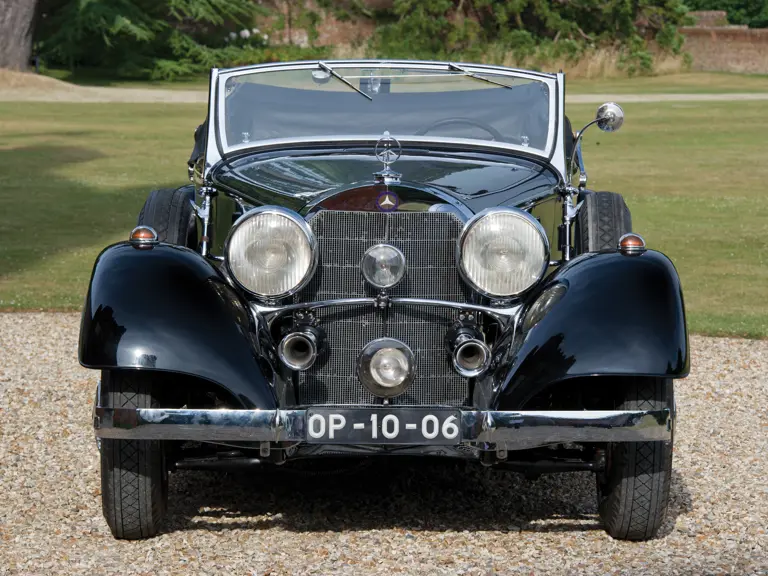


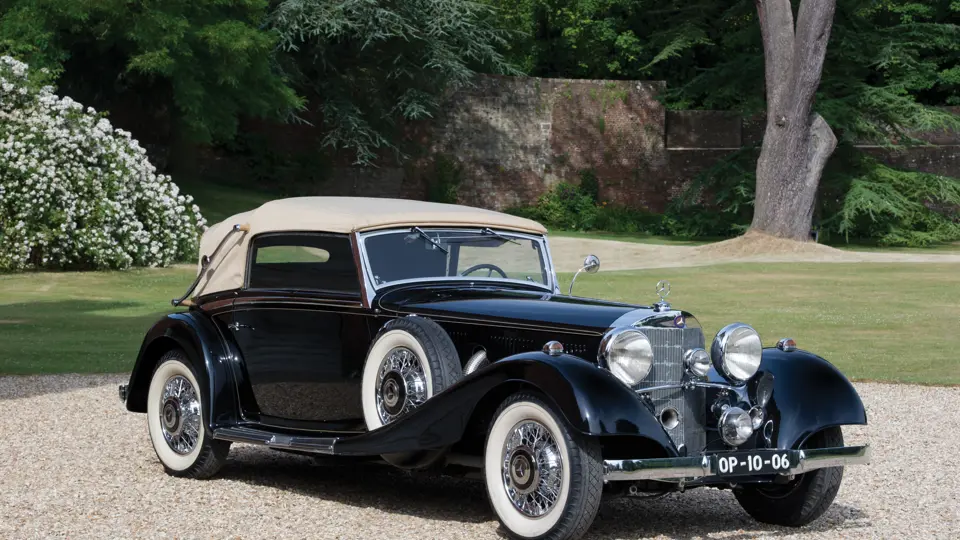
 | London, United Kingdom
| London, United Kingdom
